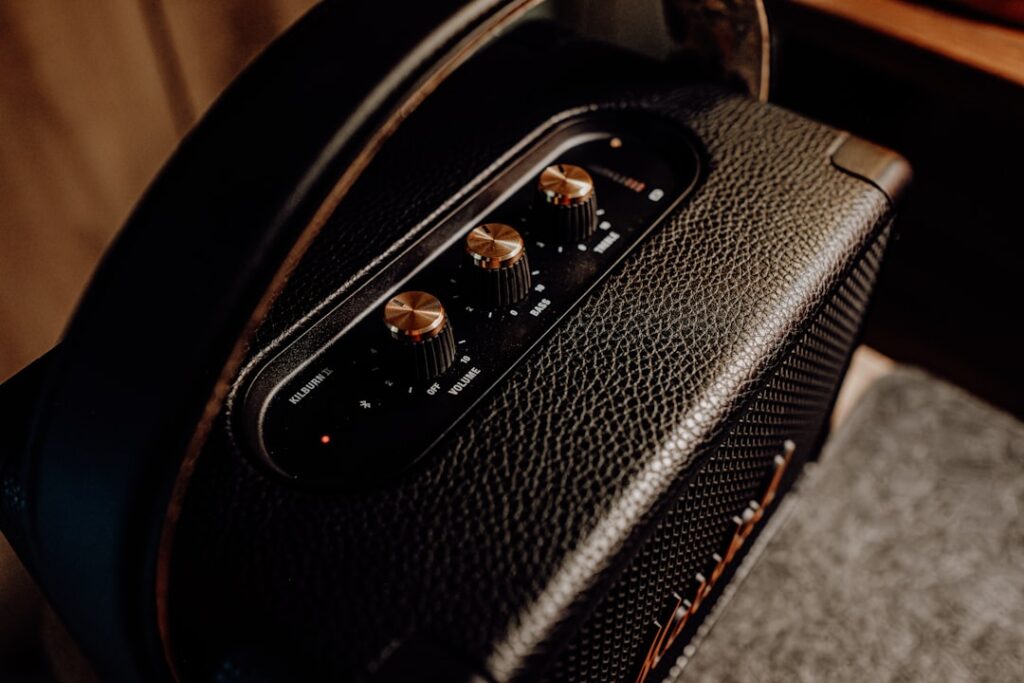The Power of Pure Brass: Graph-Tech Tailpieces

The evolution of guitar tailpieces is a fascinating journey that reflects the broader developments in musical instrument design and technology. Pure brass tailpieces have been a staple in the construction of stringed instruments for many decades, with their origins tracing back to the early 20th century. Initially, brass was favored for its acoustic properties and aesthetic appeal.
The material’s natural resonance and ability to withstand the tension of guitar strings made it an ideal choice for tailpieces, which play a crucial role in the overall sound and performance of the instrument. As guitar manufacturing progressed, the use of pure brass became synonymous with quality craftsmanship. Iconic brands such as Gibson and Fender incorporated brass tailpieces into their designs, recognizing that the material not only enhanced the tonal qualities of their guitars but also contributed to their visual allure.
The warm, golden hue of brass tailpieces became a hallmark of premium instruments, appealing to both musicians and collectors alike. Over time, the historical significance of pure brass tailpieces solidified their place in the pantheon of guitar components, making them a sought-after feature for players who value tradition and authenticity in their instruments.
Key Takeaways
- Pure brass tailpieces have a long history in guitar construction, dating back to the early 20th century.
- Graph-Tech tailpieces offer advantages such as improved tuning stability, reduced string breakage, and enhanced sustain.
- Graph-Tech tailpieces improve tone and sustain by transferring vibrations more efficiently and evenly across the strings.
- Pure brass tailpieces are known for their durability and longevity, making them a popular choice among guitarists.
- Graph-Tech tailpieces can have a significant impact on guitar performance, enhancing playability and overall sound quality.
The Advantages of Graph-Tech Tailpieces
Graph-Tech tailpieces have emerged as a modern alternative to traditional materials like brass, offering a range of advantages that appeal to contemporary guitarists. One of the most significant benefits of Graph-Tech is its innovative construction from a composite material that combines graphite with other polymers. This unique blend results in a lightweight yet incredibly strong tailpiece that can withstand the rigors of performance while providing enhanced tonal characteristics.
The reduced weight of Graph-Tech tailpieces can lead to improved playability, allowing musicians to maneuver their instruments with greater ease.
Unlike brass, which can tarnish or corrode over time, Graph-Tech is impervious to moisture and temperature fluctuations.
This durability ensures that the tailpiece maintains its appearance and functionality over the years, making it an attractive option for players who frequently perform in varying conditions. Additionally, Graph-Tech tailpieces are often designed with advanced features such as built-in string trees or adjustable saddles, further enhancing their versatility and usability for modern guitarists.
How Graph-Tech Tailpieces Improve Tone and Sustain

The tonal properties of a guitar are influenced by numerous factors, including the materials used in its construction. Graph-Tech tailpieces are engineered to enhance both tone and sustain, providing players with a richer sound experience. The composite material used in Graph-Tech tailpieces is designed to absorb and dissipate vibrations differently than traditional metals like brass.
This unique vibration response can lead to a more balanced tonal output across the frequency spectrum, allowing for clearer highs and more pronounced lows. Sustain is another critical aspect of a guitar’s performance that can be significantly improved with Graph-Tech tailpieces. The material’s ability to maintain resonance without dampening vibrations contributes to longer sustain times, allowing notes to ring out more fully.
This characteristic is particularly beneficial for lead guitarists who rely on sustained notes for solos or expressive playing styles. By enhancing both tone and sustain, Graph-Tech tailpieces provide musicians with greater creative possibilities, enabling them to explore new sonic landscapes.
The Durability and Longevity of Pure Brass Tailpieces
| Test | Result |
|---|---|
| Salt Spray Test | 1000 hours without corrosion |
| Tensile Strength | 5000 psi |
| Life Cycle Testing | 100,000 cycles without failure |
| Material Composition | 100% pure brass |
While pure brass tailpieces are celebrated for their acoustic properties, they are not without their drawbacks when it comes to durability. Over time, exposure to moisture and air can lead to tarnishing and corrosion, which may affect both the appearance and performance of the tailpiece. Musicians who frequently play in humid environments or who do not maintain their instruments properly may find that their brass tailpieces require regular cleaning and maintenance to preserve their functionality.
Despite these challenges, pure brass tailpieces can still offer impressive longevity when cared for correctly. Many players appreciate the vintage aesthetic that develops over time as brass ages, often viewing it as a badge of honor that reflects their musical journey. Additionally, high-quality brass tailpieces are often crafted with precision engineering, ensuring that they can withstand the mechanical stresses imposed by string tension.
For those who prioritize traditional craftsmanship and are willing to invest time in maintenance, pure brass tailpieces can remain reliable components of their guitars for many years.
The Impact of Graph-Tech Tailpieces on Guitar Performance
The introduction of Graph-Tech tailpieces has had a profound impact on guitar performance, particularly in terms of playability and sound quality. Musicians often report that guitars equipped with Graph-Tech tailpieces feel more responsive and dynamic compared to those with traditional metal counterparts. This enhanced responsiveness can be attributed to the material’s unique vibration characteristics, which allow for greater energy transfer between the strings and the body of the guitar.
Moreover, Graph-Tech tailpieces often feature innovative designs that cater to modern playing styles. For instance, some models incorporate adjustable saddles that enable players to fine-tune their intonation with precision. This level of customization is invaluable for guitarists who demand accuracy in their tuning across the fretboard.
Additionally, the lightweight nature of Graph-Tech tailpieces contributes to an overall reduction in instrument weight, making it easier for musicians to perform for extended periods without experiencing fatigue.
The Importance of Tailpiece Material in Guitar Construction

Tonal Qualities and Personal Preference
Understanding these differences allows musicians to select instruments that align with their personal preferences and playing styles. By choosing a tailpiece that complements their musical approach, guitarists can optimize their sound and performance.
Tailpiece Material and Guitar Resonance
Furthermore, the material used in a tailpiece can affect how well a guitar resonates as a whole. A well-matched tailpiece can enhance the overall tonal balance of an instrument by complementing its body wood and construction techniques. For instance, pairing a mahogany body with a Graph-Tech tailpiece may yield a rich, warm sound that highlights the wood’s natural characteristics.
Matching Tailpiece to Guitar Body and Style
Conversely, using a brass tailpiece on a brighter-sounding guitar may accentuate its treble frequencies, resulting in a more cutting tone suitable for certain genres like rock or metal. By carefully selecting a tailpiece that matches the guitar’s body and construction, musicians can unlock the full potential of their instrument and achieve the desired sound.
Comparing Graph-Tech Tailpieces to Other Materials
When comparing Graph-Tech tailpieces to other materials commonly used in guitar construction—such as aluminum, steel, or even wood—several key differences emerge that highlight the advantages of Graph-Tech. Aluminum tailpieces are known for their lightweight properties but can sometimes produce a harsher tone due to their rigidity.
In contrast, Graph-Tech strikes an ideal balance between weight, durability, and tonal quality. Wooden tailpieces are another alternative that some luthiers employ; however, they often lack the stability required for consistent performance over time. Wood can warp or crack under pressure or environmental changes, which can compromise tuning stability and overall sound quality.
Graph-Tech’s composite nature provides a level of resilience that wood cannot match while still allowing for desirable tonal characteristics. This makes Graph-Tech an increasingly popular choice among modern guitar builders seeking innovative solutions without sacrificing sound quality.
Tips for Choosing the Right Graph-Tech Tailpiece for Your Guitar
Selecting the right Graph-Tech tailpiece for your guitar involves several considerations that can significantly impact your playing experience. First and foremost, it’s essential to ensure compatibility with your instrument’s design and specifications. Different guitars may require specific mounting styles or sizes; therefore, consulting your guitar’s manufacturer or specifications is crucial before making a purchase.
Additionally, consider your playing style and tonal preferences when choosing a Graph-Tech tailpiece. Some models are designed with specific features tailored to particular genres or techniques; for example, if you frequently use alternate tunings or drop tunings, look for adjustable saddles that allow for precise intonation adjustments. Furthermore, pay attention to the finish and aesthetics of the tailpiece; while functionality is paramount, many players also appreciate how their instrument looks on stage or in practice settings.
Ultimately, investing time in researching various options will help you find a Graph-Tech tailpiece that not only enhances your guitar’s performance but also complements your unique playing style and musical vision.
FAQs
What are graph-tech tailpieces?
Graph-tech tailpieces are a type of hardware used on stringed instruments, such as guitars, to anchor the strings at the bridge. They are designed to improve sustain, tone, and tuning stability.
Are graph-tech tailpieces made of pure brass?
Graph-tech tailpieces are not made of pure brass. They are typically made of a composite material that may include brass particles or other materials to achieve the desired tone and performance characteristics.
What are the benefits of using graph-tech tailpieces?
Graph-tech tailpieces are designed to offer improved sustain, tone, and tuning stability compared to traditional metal tailpieces. They are also known for reducing string breakage and improving overall playability.
Can graph-tech tailpieces be used on any type of guitar?
Graph-tech tailpieces are designed to be compatible with most standard electric and acoustic guitars. However, it’s always best to check with the manufacturer or a professional luthier to ensure compatibility with a specific instrument.






